Defixiones: Ancient Roman Curse Tablets Became Big Business
Ellen Lloyd - AncientPages.com - For over 700 years, ancient Romans bought a variety of defixiones – curse tablets to cast evil spells on anyone and anything.
Ancient Romans believed in the power of spells and thought these magical curse tablets would help them destroy their enemies. But you have to act quickly. It was vital to buy the curse tablet before your enemy came up with the same idea.
The Roman curse tablets from Bath Britain's earliest prayers. One of the 130 Bath curse tablets. The inscription in British Latin translates as: "May he who carried off Vilbia from me become liquid as the water. May she who so obscenely devoured her become dumb". Image credit: Mike Peel - (www.mikepeel.net) - CC BY-SA 4.0
The Ancient Business Of Buying Curse Tablets
The defixiones, curse tablets, were made of lead or lead alloys. It was a material that would endure harsh climatic elements and survive longer. It was less costly than the papyrus and wax alternatives. Sometimes limestone, ceramics, and even semi-precious stones were used to convey the desired ancient messages.
According to Pliny, the Elder (23 AD - 79 AD), a Roman scholar, Gaius Plinius Secundus, knew ancient Romans deeply feared curses.
Archaeologists have unearthed more than 1500 ancient curse tablets. Most of them were found in Italy, often near Rome. Several curse tablets have also been unearthed in Roman Britain. People bought curse tablets from "professional" magicians, who had ready curse tables in their stocks. All the customer had to do was state the victim's name. This name was quickly inscribed on the defixiones.
The curse tablets conveyed messages to influential gods and spirits, usually asking them for victory over an enemy by binding them up in terrible trouble.
Ancient Curse Tablets Were Often Placed In Graves
Defixiones were laid as close to the victim as possible.
Roman curse tablet with voces mysticae in Greek. The name of the target, Caius Iulius Viator, was added in Latin. Found in Tongeren (Belgium), 70-100 CE, Gallo-Roman Museum (Tongeren). Image credit: GRM Tongeren - CC0
For instance, a curse on a chariot racer would best be concealed in the stadium; the one targeting a prominent bureaucrat would need to be buried near his government office. It happened that they were also placed inside graves.
Ancient Romans believed that people who died early were doomed to wander around the Earth as ghosts. By placing defixiones inside graves, the curses could help the deceased get peace if the spirit helped execute the curse. The fact that it was strictly prohibited to open graves did not stop people who quietly sneaked in at night at placed a curse tablet inside the tomb.
Everyone Was Casting Spells And Cursed Others
There was no limit to the number of curses in people's beliefs. Many unearthed defixiones showed signs of people's selfishness and greed, revenge, justice, sport, business, love, and sex. Rivals in sports and business, for example, were cursed to fail.
Curse Tablets Were Forbidden Several Times
The ancient curse tablets became extremely popular and were undoubtedly a big business. The Roman Emperor made several attempts to forbid people from using them. The punishment for using defixiones was crucifixion or killing by wild animals. Nevertheless, no punishment could frighten ancient Romans, who kept buying the curse tablets and using them against their enemies.
Early Christians also used curse tablets for a while before the Church successfully managed to stop the spread and use of the defixiones.
Updated on January 15, 2024
Written by Ellen Lloyd – AncientPages.com
Copyright © AncientPages.com. All rights reserved. This material may not be published, broadcast, rewritten or redistributed in whole or part without the express written permission of AncientPages.com
Expand for referencesMore From Ancient Pages
-
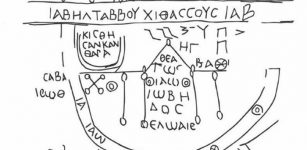 A Remarkable Curse Tablet Dated To the 1st Century AD – Unearthed In Tongeren
Archaeology | Jul 10, 2020
A Remarkable Curse Tablet Dated To the 1st Century AD – Unearthed In Tongeren
Archaeology | Jul 10, 2020 -
 Ancient ‘Cosmic’ Artifacts – Ancient Civilizations Used Meteoric Iron Much Earlier Than Previously Thought
Archaeology | Dec 6, 2017
Ancient ‘Cosmic’ Artifacts – Ancient Civilizations Used Meteoric Iron Much Earlier Than Previously Thought
Archaeology | Dec 6, 2017 -
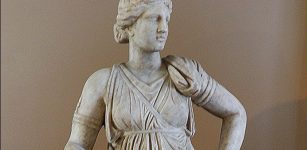 Goddess Artemis – One Of The Most Respected Olympians
Featured Stories | Oct 1, 2016
Goddess Artemis – One Of The Most Respected Olympians
Featured Stories | Oct 1, 2016 -
 Thor: Brave And Mighty Thunder God In Norse Mythology
Featured Stories | Nov 7, 2016
Thor: Brave And Mighty Thunder God In Norse Mythology
Featured Stories | Nov 7, 2016 -
 Koshchey ‘The Immortal’: Strong And Wise Ruler Of Darkness In Slavic Mythology
Featured Stories | Jul 3, 2016
Koshchey ‘The Immortal’: Strong And Wise Ruler Of Darkness In Slavic Mythology
Featured Stories | Jul 3, 2016 -
 Well-Preserved 1,000-Year-Old Ulfberht Sword Found In The Wisla River, Poland
Archaeology | Jan 23, 2024
Well-Preserved 1,000-Year-Old Ulfberht Sword Found In The Wisla River, Poland
Archaeology | Jan 23, 2024 -
 Pre-Columbian Americans Mastered Electricity – Ancient Inscription And Document Reveal Proof Of Advanced Ancient Technology
Ancient Mysteries | Feb 4, 2018
Pre-Columbian Americans Mastered Electricity – Ancient Inscription And Document Reveal Proof Of Advanced Ancient Technology
Ancient Mysteries | Feb 4, 2018 -
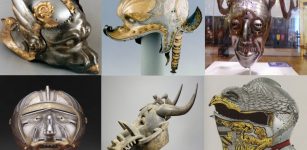 Truly Bizarre And Most Fearsome Ancient Helmets Ever Seen
Artifacts | Sep 1, 2016
Truly Bizarre And Most Fearsome Ancient Helmets Ever Seen
Artifacts | Sep 1, 2016 -
 Teens Make Incredible Discovery In An Ancient Florida Cave
Featured Stories | Mar 15, 2024
Teens Make Incredible Discovery In An Ancient Florida Cave
Featured Stories | Mar 15, 2024 -
 Kelpie – Supernatural Horse-Liked Creature Lures Humans To Death In Scottish Lore
Featured Stories | Dec 29, 2021
Kelpie – Supernatural Horse-Liked Creature Lures Humans To Death In Scottish Lore
Featured Stories | Dec 29, 2021 -
 Oldest Known Fossil Footprints Discovered On Crete By Polish Researcher Challenge Established Theories Of Human Evolution
Archaeology | Nov 11, 2017
Oldest Known Fossil Footprints Discovered On Crete By Polish Researcher Challenge Established Theories Of Human Evolution
Archaeology | Nov 11, 2017 -
 Sacred Number One: Very Powerful Symbol Equated With The Mystic Center
Ancient Symbols | Oct 2, 2019
Sacred Number One: Very Powerful Symbol Equated With The Mystic Center
Ancient Symbols | Oct 2, 2019 -
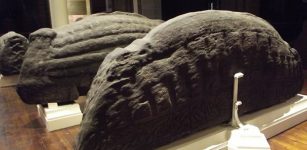 The Govan Stones – Treasures From The Viking Era In Britain
Featured Stories | Dec 27, 2015
The Govan Stones – Treasures From The Viking Era In Britain
Featured Stories | Dec 27, 2015 -
 Ponce De Leon’s Quest For The Fountain Of Youth In Florida
Featured Stories | Jun 12, 2019
Ponce De Leon’s Quest For The Fountain Of Youth In Florida
Featured Stories | Jun 12, 2019 -
 Unusual Ancient Skeletons Found In Minnesota – But Some Are Not What They Seem
Archaeology | Dec 10, 2024
Unusual Ancient Skeletons Found In Minnesota – But Some Are Not What They Seem
Archaeology | Dec 10, 2024 -
 The Egyptian Dream Book Reveals Ancient Predictions Of The Future
Egyptian Mythology | Jun 6, 2020
The Egyptian Dream Book Reveals Ancient Predictions Of The Future
Egyptian Mythology | Jun 6, 2020 -
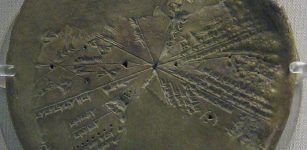 Assyrian King Ashurbanipal’s Great Library With Thousands Of Cuneiform Tablets
Civilizations | Dec 9, 2015
Assyrian King Ashurbanipal’s Great Library With Thousands Of Cuneiform Tablets
Civilizations | Dec 9, 2015 -
 Motilla del Azuer: Impressive And Unusual 3,200-Year-Old Fortress
Featured Stories | Nov 13, 2018
Motilla del Azuer: Impressive And Unusual 3,200-Year-Old Fortress
Featured Stories | Nov 13, 2018 -
 Mysterious 4,000-Year-Old Table-Like And Unique Dolmen Discovered In Galilee Hills, Israel
Archaeology | Mar 6, 2017
Mysterious 4,000-Year-Old Table-Like And Unique Dolmen Discovered In Galilee Hills, Israel
Archaeology | Mar 6, 2017 -
 500-Year-Old Shiva Temple Constructed On Rock Without Foundation Pits Needs Repairs
News | Sep 7, 2015
500-Year-Old Shiva Temple Constructed On Rock Without Foundation Pits Needs Repairs
News | Sep 7, 2015


